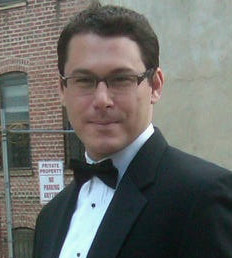The development of energy efficient practices and products requires deliberate efforts and actions by individuals and organizations. Technology breakthroughs can and do occur in a vacuum and in order for advancements to positively impact society there needs to be an action-oriented process for change to occur. Effectuating change in deliberate, incremental steps is a hallmark of market transformation and the Northeast is often seen as a leader in this practice.
Market transformation is not alchemy, although it is magical when it happens. Market transformation is a measured approach that systematically addresses barriers by developing collaborations amongst the business community that produce and distribute the energy consuming products and services that households and businesses use, the utilities that provide electric services and can buy down the price of high efficiency products, and public utility commissions that approve the use of rate-payer funds for energy efficiency measures. In addition, researchers, educators, advocates, and municipalities work with utilities and business to facilitate change on the ground.
In the Northeast, the effects of market transformation can be seen in the new way commercial and residential buildings are constructed, along with the appliances and equipment that are used in these spaces. The rate of technology adoption and associated efficiency gains are moved forward through education, advocacy, incentives, and forward looking research. In Massachusetts, this combination of influences can be seen in the
Green Communities Act, a landmark public policy effort that is supported by utilities and communities and is changing the energy efficiency footprint of structures built in the Commonwealth.
The Green Communities Act allows for energy efficiency advances in the construction of buildings through the development of a “stretch” energy code that is at least 20 percent more energy efficient than the base code. Currently, there are over 2.5 million residents residing in 74 green communities and through the market transforming work of the aforementioned stakeholders these residents will soon be positively impacted by better energy use and management.
Technically, a 20 percent increase in building energy use is achievable—it has been modeled to work—but it takes a coalition of organizations to move the research into action. To realize large efficiency gains, utilities, communities, academic researchers and NEEP are working together to influence the construction industry to build to 20 percent above code. Workshops and technical manuals are made available to contractors and project managers to increase the knowledge base and expand the pool of labor that is capable of developing the high efficiency buildings. This effort is just underway but the goal is to move the market through institutional change brought forth by the dispersion of high efficiency building practices.
Reaching critical mass in terms of a qualified pool of labor and demand for high efficiency equipment is one step in the market transformation process. As the price to build high efficiency buildings fall and subsequent revisions to the state base code and future looking stretch code are made, the Commonwealth will be able to lock in the benefits of a transformed marketplace. With these steps in place the long-term goal of developing net zero energy buildings will begin to take shape.
Finally, remember that market transformation is not an overnight process and that the process is never truly over. While the efficiency community may be enamored with the discussion of disruptive technologies—game changers—the reality is that effectuating change in building or appliance efficiency is long and somewhat clunky. The game does change and it takes the coordinated efforts of multiple groups to keep the ball moving down the court.
Adam Cooper manages electric efficiency research projects at the Institute for Electric Efficiency, a Washington DC non-profit organization that is a program of the Edison Foundation. Mr. Cooper is a member of DOE’s State Energy Efficiency (SEE) Action Network Consumer Information and Behavior and Utility Motivation subcommittee working groups.

